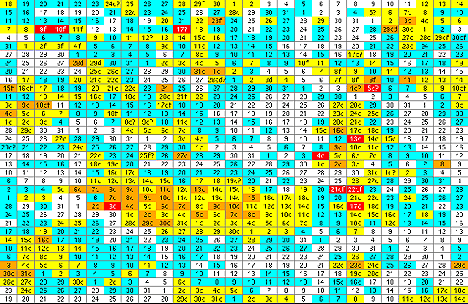Recurrent Geomagnetic Disturbances
The solar rotation period (27 days as seen from the Earth) is an important time scale in determining the occurrence of geomagnetic disturbances. This comes about in several different ways. Firstly, a large sunspot region may exist for several rotations and produce energetic flares as it crosses the visible disc of the Sun. Coronal mass ejections (CMEs) associated with these flares may produce geomagnetic storms that occur preferentially during one half of the solar rotation but not in the other. Secondly, the streams of high speed solar wind produced by coronal holes are sometimes very long-lived and can be associated with a geomagnetic disturbance each time the stream is suitably located with respect to the Sun-Earth direction - recurrent geomagnetic disturbances. The effect is similar to a lighthouse beam in which the light is seen once per rotation. Such sequences of recurrent disturbances can sometimes be observed for as long as a year although most patterns are shorter lived, especially near the peak of the cycle. Recurrent patterns tend to show variation from rotation-to-rotation in the timing of the disturbance and in its strength. In particular, the strength is affected by the seasonal trend and there is also an intrinsic variability related to the Sun and to the response of the Earth's magnetic field to the solar wind.
Recurrent patterns are particularly useful for forecasting purposes as they allow predictions of disturbances and quiet periods some time in advance. Naturally, the most reliable forecasts of this type are a single solar rotation (27 days) in advance but it is sometimes possible to forecast for several rotations. The major problem for forecasters is to pick the start and the end of sequences although there are sometimes difficulties when disturbances are weak, or are delayed. The patterns are most stable in the declining phase of the solar cycle and least reliable in the rise and maximum of the cycle. Such longer term forecasts can be quite useful but there is always the risk that some unexpected event can produce a disturbance.
The following figure shows an interval of recurrent disturbances. In the figure, sequences of 27 days, the approximate solar rotation period as seen from the Earth, have been stacked on each other. Days have been colour coded red, orange, yellow, blue or white in decreasing geomagnetic activity.
Recurrent disturbances are seen as orange/yellow patches having a vertical extent.

Material prepared by Richard Thompson





